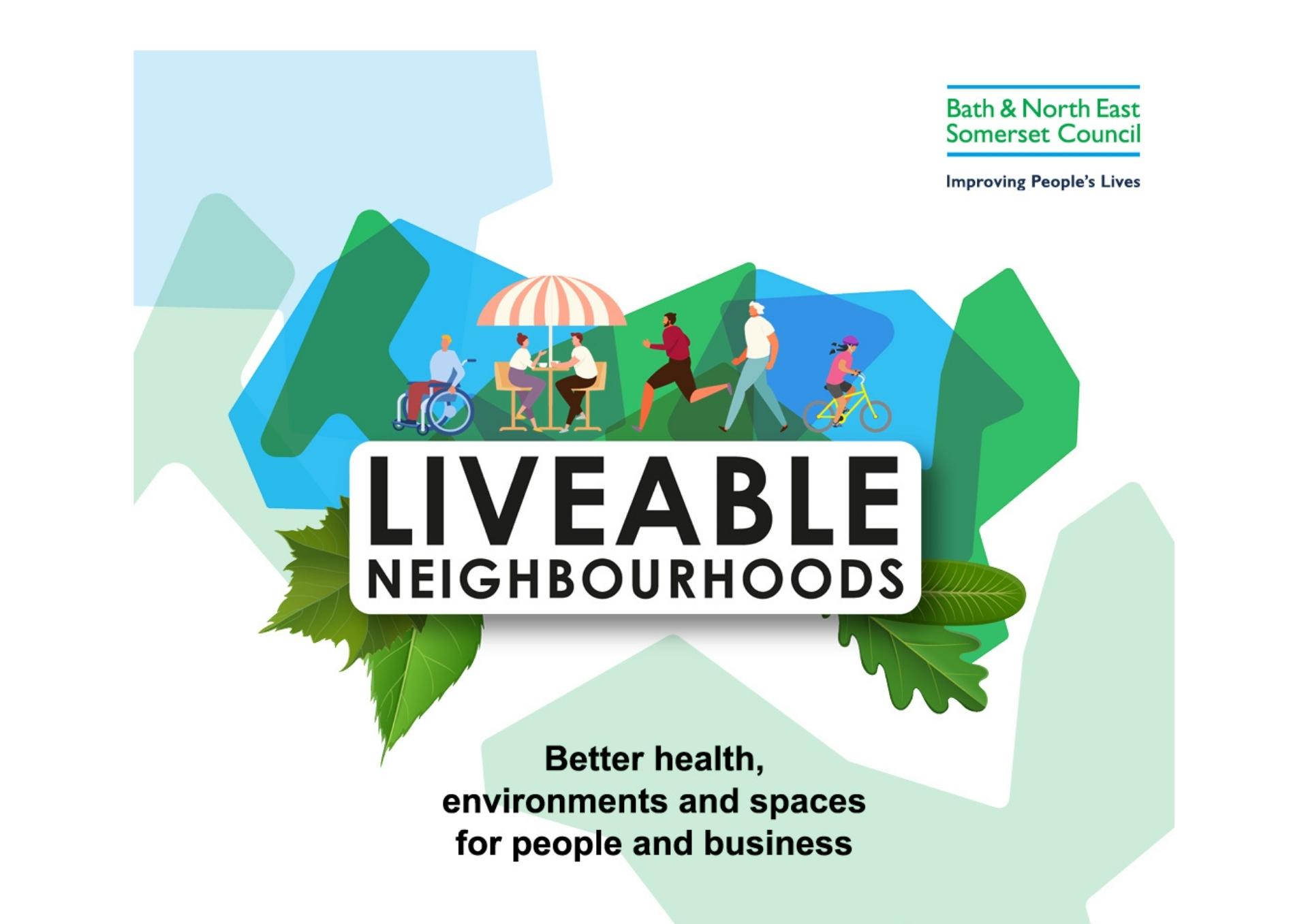Date published: 2023-11-09 | Category: Delivering for local residents, Giving people a bigger say, Parking and Travel, Transport and Development

Plans for five new trial Bath Liveable Neighbourhood schemes under Experimental Traffic Regulation Orders are being set out in Bath & North East Somerset Council’s Forward Plan.
They follow on from a large community engagement exercise carried out over the past two years, and if approved would see five trial schemes installed under Experimental Traffic Regulation Orders from spring 2024.
The council has secured £736,000 of funding from the West of England Mayoral Combined Authority to implement the trials ahead of delivering the wider Liveable Neighbourhoods programme, the purpose of which is to develop a range of measures to improve residential streets.
The trials have been chosen because of their suitability to help tackle through-traffic and create more opportunities for community cohesion, walking and cycling.
Single Member Decision reports seeking permission to trial through-traffic restrictions as Experimental Traffic Regulation Orders (ETROs) will be put forward on the following areas:
• A through-traffic restriction in Catharine Place
• A through traffic restriction in Winifred’s Lane (south of its junction with Somerset Lane) and supplemented by a no-right-turn onto Sion Hill from the northern end of Cavendish Road
• A through-traffic restriction in Sydney Road at its junction with New Sydney Place
• No entry for motorised vehicles into Upper Gay Street from the George Street junction
• Formalisation of a one-way in Charmouth Road, Lyme Road and Lyme Gardens
If approved the schemes would operate under experimental trials which allow residents and the wider public to experience the change in-situ and share their thoughts over a minimum of six months. During trials the council would monitor the impact of the intervention on traffic and any uptake in active travel. The trials would be removed or made permanent within 18 months of starting.
Councillor Joel Hirst, cabinet project lead for Liveable Neighbourhoods and Residential Parking Zones, said: “Based on feedback from residents, we are considering five new trials early next year and will receive reports on each of them in order to make our decisions. The trial areas are going onto the council’s Forward Plan and reflect our commitment to work with communities to create quieter, safer and healthier streets, and to broaden people’s travel choices by creating more space for walking, wheeling and cycling.”
Councillor Manda Rigby, cabinet member for Transport added: "Three through-traffic restriction trials are already in place, in Church Street, Southlands, and Queen Charlton Lane, and we will decide on whether to make them permanent or not by the end of the year. We will base our decisions on consultation feedback, traffic monitoring data, current transport policies, and air quality data. These schemes have shown us that the best method of introducing Liveable Neighbourhood proposals is via an ETRO giving time to monitor impacts and for communities to respond to the changes, before any permanent changes are adopted, so we are adopting this method for these next five communities. At all times, there will be vehicle access to all properties as part of these schemes once in operation."
Reports on the proposed new schemes will be available on the council’s website from December and letters with more details will be sent to residents and businesses in the local areas at the same time.
The decision will be published on the council’s website. Should the new trials go ahead, the council would engage the community throughout the winter. Detailed plans would be shared and there would be opportunities to speak with advisors in person about any concerns.
The Forward Plan will be updated on Friday 10 November and can be found here on the council’s website.
More information go the Liveable Neighbourhoods programme pages Information on the current through-traffic restriction trials in Church Street, Southlands and Queen Charlton Lane is also on the website here.
ENDS
Note to editors:
- In 2021, 15 areas in Bath & North East Somerset were selected to become Liveable Neighbourhoods. Since then, the council has collaborated with residents to identify solutions to the community’s top concerns.
- Suggestions from residents include through traffic restrictions, wider footways, cycle lanes, better crossings and a range of traffic-calming measures.
- The council now has a package of draft designs and a shortlist of measures for each of the LN areas, based on public consultation feedback, community co-design workshops and a technical review.
- These will be submitted in a final business case to the West of England Mayoral Combined Authority for funding in winter 2023, under the City Region Sustainable Transport Settlement programme, which us funded by UK Government.
- The council will continue engagement with the overall preliminary designs when the full business case before the West of England Mayoral Combined Authority has been agreed, including costs and priorities.
- For more information on each of the areas and how their LN has been developed go to the Liveable Neighbourhood web pages: https://beta.bathnes.gov.uk/liveable-neighbourhoods
- The council has also now completed delivery of seven new residents’ parking zones installed under the Liveable Neighbourhoods programme. These include the large residential areas of Walcot, Snow Hill and Claremount Road, and Oldfield Park and Westmoreland. The initial feedback from residents in all new zones is overall very positive and the council is working closely with Oldfield Park businesses to ensure access for shoppers is also maintained.More information on all RPZs installed under the LN programme is available at: https://beta.bathnes.gov.uk/LNRPZ
